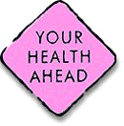|
The
primary reason most stroke victims receive inadequate immediate
treatment is the inability of the sufferer or bystanders to
recognize the symptoms of a stroke in progress. Public knowledge
of stroke warning signs has traditionally been poor, with
only about half of all people able to name even one stroke
warning sign correctly. How many can you name?
A study in the Journal of the American Medical Association
assessed public knowledge of stroke warning signs and
preventable risk factors in 2000, and compared it with figures
compiled from the same area around Cincinnati, Ohio, recorded
five years earlier. Nearly 2,200 individuals completed the
survey.
 The good news first: The number of people who could correctly
name at least one stroke warning sign increased significantly
between 1995 and 2000, from 57% to 70%. About the same percentage
correctly identified one or more risk factors in both surveys,
although there was a slight increase (68% to 72%) over five
years. The good news first: The number of people who could correctly
name at least one stroke warning sign increased significantly
between 1995 and 2000, from 57% to 70%. About the same percentage
correctly identified one or more risk factors in both surveys,
although there was a slight increase (68% to 72%) over five
years.
Now the bad news: 30% of people still can't identify even
one stroke warning sign. Also, individuals with the highest
risk of stroke (those over age 75, blacks and men) appear
to be the least likely to know the warning signs or risk factors
for one. After reading this, you'll have no excuse: Other
risk factors that increase your chances for a stroke include
high blood pressure; smoking; diabetes; heart disease; and
heavy alcohol consumption. Also, below is a list of warning
signs that, if occurring suddenly, may indicate a stroke in
progress:
- numbness or weakness in the arms, legs or face, especially
on one side of the body;
- confusion or trouble speaking;
- difficulty seeing;
- problems with walking or balance due to dizziness or sudden
loss of coordination; or
- severe headache.
Reference:
Schneider AT, Pancioli AM, et al. Trends in community knowledge
of the warning signs and risk factors for stroke. Journal
of the American Medical Association 2003:289(3), pp. 343-346.
For more information on senior health issues, go to https://www.chiroweb.com/tyh/senior.html
|



